Esports Event A Comprehensive Guide
The world of competitive gaming, or esports, has exploded in popularity, transforming from niche hobby to a global phenomenon. Esports events, ranging from small local tournaments to massive international championships, are complex undertakings requiring meticulous planning, substantial resources, and a keen understanding of both the gaming community and the broader entertainment landscape. This guide delves into the multifaceted aspects of organizing and executing a successful esports event, from initial concept to post-event analysis.
From securing sponsorships and choosing the right venue to managing player logistics and ensuring a seamless technical experience, every element plays a crucial role in the event’s success. We’ll explore the strategies involved in attracting large audiences, employing effective marketing techniques, and ultimately creating an unforgettable experience for players, spectators, and stakeholders alike. Understanding the intricate details, from game selection and tournament format to audience engagement and revenue generation, is key to navigating the dynamic world of esports events.
Esports Event Overview
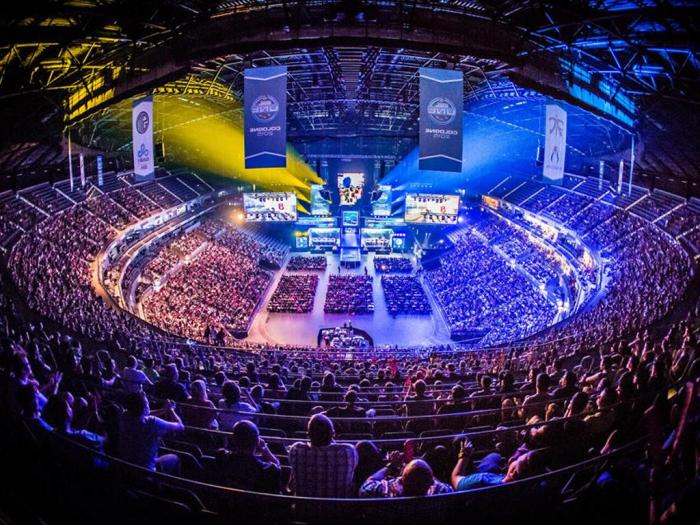
Major esports events are complex productions, requiring meticulous planning and execution to deliver a high-quality experience for players, spectators, and sponsors. These events typically follow a structured format, incorporating various stages from initial concept to post-event analysis. Understanding this structure is crucial for anyone involved in organizing or participating in such events.
A typical major esports event structure involves several key phases, each with its own set of tasks and responsibilities. These phases often overlap, requiring effective coordination and communication among all involved parties. The successful execution of each phase directly impacts the overall success of the event.
Event Stages
The organization of a major esports event can be broken down into several key stages: Planning and Pre-production, Production (the event itself), and Post-Production. Planning involves securing sponsorships, venue selection, player recruitment, and marketing. Production encompasses the live event, including broadcasting, commentary, and on-site management. Post-Production includes analysis of the event’s success, feedback gathering, and preparation for future events. Each stage demands specific attention to detail and careful management of resources.
Key Personnel Roles and Responsibilities
Successful esports events rely on a team with diverse skills and expertise. Key roles include: Tournament Directors (overall event management), Production Managers (technical aspects of broadcasting), Marketing and Sponsorship Managers (securing funding and promotion), Community Managers (player engagement and communication), and Game Masters (on-site refereeing and rule enforcement). Each role has specific responsibilities contributing to the event’s smooth operation. For example, the Tournament Director is responsible for the overall strategic direction, while the Production Manager ensures the technical aspects are flawlessly executed.
Sample Event Schedule
This is a sample schedule for a hypothetical three-day “Apex Legends” tournament:
| Day | Time | Activity |
|---|---|---|
| Day 1 | 9:00 AM – 12:00 PM | Player Registration & Practice |
| Day 1 | 12:00 PM – 1:00 PM | Lunch Break |
| Day 1 | 1:00 PM – 6:00 PM | Group Stage Matches |
| Day 2 | 10:00 AM – 6:00 PM | Quarter-Finals & Semi-Finals |
| Day 3 | 12:00 PM – 4:00 PM | Grand Finals |
| Day 3 | 4:00 PM – 5:00 PM | Award Ceremony & Closing Remarks |
Event Workflow Flowchart
Imagine a flowchart. It would begin with a “Start” node, branching into “Event Planning” (which includes securing venue, sponsors, and players), followed by “Marketing and Promotion,” then “Event Execution” (covering the tournament itself, including broadcasting and commentary), and finally “Post-Event Analysis” which feeds back into the “Event Planning” stage for future improvements. Each stage would have sub-branches detailing specific tasks, all leading to an “End” node. This visual representation would clearly illustrate the sequential and iterative nature of the event workflow.
Esports Event Audience & Marketing
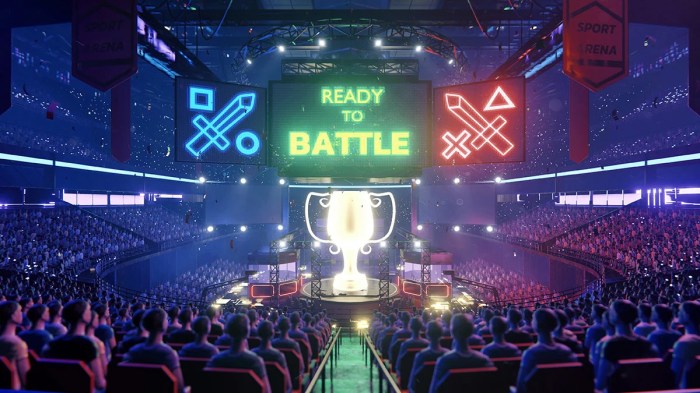
Attracting a large and engaged audience is paramount to the success of any esports event. This requires a multi-faceted approach encompassing strategic marketing across various channels, a deep understanding of the target demographic, and a well-defined budget allocation. Understanding audience motivations is key to crafting compelling marketing messages that resonate and drive attendance.
Strategies for Attracting a Large Audience
Successful esports event promotion relies on a combination of strategies. Creating a compelling event experience is crucial; this includes securing high-profile teams and players, offering engaging side events (like meet-and-greets or cosplay contests), and ensuring a high-quality production with excellent streaming capabilities. Leveraging influencer marketing, partnering with relevant gaming communities and organizations, and offering attractive ticket packages or VIP experiences can significantly boost attendance. Early bird discounts and tiered ticket pricing can also incentivize early registration. Finally, strong public relations and media coverage are essential to build anticipation and generate buzz.
Marketing Channels for Esports Events
Esports events benefit from a diverse marketing strategy encompassing both traditional and digital channels. Digital marketing offers unparalleled reach and targeting capabilities. Social media platforms like Twitch, YouTube, Twitter, and Instagram are vital for reaching the target audience, allowing for direct engagement and the creation of interactive content. Paid advertising campaigns on these platforms can be highly effective. Email marketing is crucial for keeping registered attendees informed and engaged. Website optimization with clear information about the event, ticket purchasing, and schedule is essential. Traditional marketing methods, while potentially less targeted, can still play a role. Print advertising in gaming magazines or partnerships with relevant gaming retailers can reach specific demographics. Press releases to gaming news websites and collaborations with esports news outlets can help build awareness and credibility.
Comparison of Traditional and Digital Marketing Effectiveness
Digital marketing offers significant advantages for esports events due to its precise targeting capabilities and cost-effectiveness. Platforms like Twitch and YouTube allow for highly targeted advertising campaigns reaching specific gaming communities. Analytics tools provide real-time data on campaign performance, allowing for adjustments and optimization. Traditional marketing, while potentially less measurable, can still offer value, particularly in building brand awareness among a broader audience. For example, a well-placed billboard near a major gaming convention can generate significant brand recognition, though measuring its direct impact on ticket sales can be challenging. A hybrid approach, combining the precision of digital marketing with the broader reach of traditional methods, often yields the best results.
Key Demographics and Motivations of Esports Event Attendees
The primary demographic for esports events is typically young adults (18-35 years old), predominantly male, with a strong interest in video games and esports culture. However, this is increasingly diversifying, with a growing number of female attendees and a wider age range. Motivations for attending vary, including the desire to witness professional gameplay, meet favorite players or streamers, participate in community events, and experience the immersive atmosphere of a live esports event. Many attendees are highly engaged fans who actively follow specific teams or players, making them receptive to targeted marketing messages. For example, a tournament featuring a popular streamer’s favorite game will attract a significant portion of their fanbase.
Marketing Plan for a New Esports Event
This marketing plan Artikels a strategy for a hypothetical new fighting game tournament.
| Marketing Activity | Channel | Budget Allocation | Timeline |
|---|---|---|---|
| Social Media Campaign (Twitch, Twitter, Instagram) | Digital | $5,000 | 2 months prior to event |
| Influencer Marketing (Partnering with 3 relevant streamers) | Digital | $3,000 | 1 month prior to event |
| Website Development and Optimization | Digital | $2,000 | 3 months prior to event |
| Email Marketing Campaign | Digital | $500 | Ongoing |
| Press Releases to Gaming News Outlets | Traditional/Digital | $1,000 | 2 months prior to event |
| Contingency Fund | All | $1,000 | Throughout |
Total Budget: $12,500
This budget is a hypothetical example and can be adjusted based on the scale and scope of the event. The timeline is also adaptable depending on the event date. The focus is on a digital-first approach, leveraging the most effective channels for reaching the target audience.
Esports Event Logistics & Venue
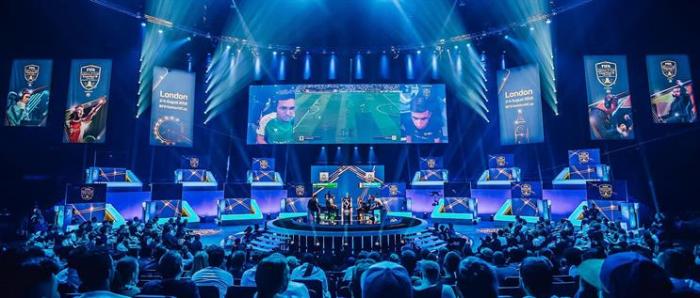
Selecting the right venue is paramount to the success of any esports event. A well-chosen location not only provides the necessary infrastructure but also enhances the overall spectator and competitor experience, contributing significantly to the event’s atmosphere and profitability. Careful consideration of several key factors is essential to ensure a smooth and memorable tournament.
Venue Selection Factors
Several critical factors influence venue selection for esports events. These include capacity, accessibility, technical infrastructure, location, cost, and the overall suitability for the specific type of esports competition being held. For instance, a large-scale tournament requiring thousands of spectators would necessitate a venue with a significantly larger capacity than a smaller, more intimate competition. Similarly, the availability of high-speed internet, reliable power, and appropriate staging areas are crucial for a smooth technical operation. The venue’s location should also be easily accessible for attendees, with ample parking and convenient public transportation links.
Logistical Requirements for Large-Scale Esports Tournaments
Hosting a large-scale esports tournament involves meticulous planning and coordination across multiple departments. This includes securing necessary permits and licenses, arranging for security personnel, managing ticketing and registration, coordinating catering and hospitality services, and establishing clear communication channels for all stakeholders. Furthermore, comprehensive risk management plans are vital to address potential issues such as power outages, internet connectivity problems, and unforeseen emergencies. A detailed schedule and timeline are crucial to ensure that all aspects of the event run smoothly and efficiently. Effective communication with all parties involved, including sponsors, vendors, and staff, is essential for a successful outcome.
Effective Venue Layouts for Different Esports Competitions
Venue layout significantly impacts the spectator experience and the overall flow of the event. For fast-paced games like Counter-Strike or Valorant, a large arena with a central stage and tiered seating arrangements allows for optimal viewing angles for a large audience. In contrast, fighting game tournaments, which often feature smaller stages and closer player-audience interaction, might benefit from a more intimate setting with a closer proximity between players and spectators. For strategy games like StarCraft II or Dota 2, larger screens displaying game information are critical, necessitating careful placement and sizing to ensure optimal visibility. Consideration must also be given to backstage areas for competitors, commentator booths, and technical support teams.
Dedicated Esports Arena vs. Repurposed Space
Dedicated esports arenas offer several advantages, including optimized infrastructure, built-in technical capabilities, and often a dedicated team experienced in hosting esports events. However, they may come with higher rental costs and potentially limited availability. Repurposed spaces, such as convention centers or stadiums, offer greater flexibility in terms of capacity and scheduling, but may require significant investment in infrastructure upgrades and technical setup to meet the demands of a high-profile esports event. The choice depends on budget, event scale, and the availability of suitable venues. For example, a smaller, regional tournament might find a repurposed space perfectly adequate, while a major international event would likely benefit from the specialized infrastructure of a dedicated esports arena.
Venue Preparation Checklist
A comprehensive checklist is crucial for ensuring a smooth and successful esports event.
Before the Event:
- Secure all necessary permits and licenses.
- Confirm venue access and arrange for key personnel.
- Complete technical setup and testing of all equipment.
- Finalize the event schedule and communicate it to all stakeholders.
- Arrange for catering, security, and cleaning services.
During the Event:
- Monitor technical equipment and address any issues promptly.
- Manage audience flow and ensure spectator safety.
- Coordinate with sponsors and vendors.
- Maintain communication with event staff and volunteers.
- Address any unforeseen issues or emergencies.
After the Event:
- Conduct a post-event review to identify areas for improvement.
- Disassemble and store equipment safely.
- Clean and restore the venue to its original condition.
- Settle all outstanding invoices and payments.
- Gather feedback from attendees, competitors, and staff.
Esports Event Technology & Production
A successful esports event hinges on a robust and reliable technological infrastructure. From seamless streaming to accurate data presentation and engaging audience interaction, technology plays a pivotal role in delivering a captivating and memorable experience for both players and viewers. This section details the essential technological components and best practices for a high-quality esports event production.
Technical Infrastructure Requirements
The technical infrastructure required for a successful esports event encompasses several key areas. A reliable network is paramount, capable of handling high bandwidth demands for streaming, data transmission, and communication between various systems. This network needs redundancy to mitigate potential disruptions. High-performance computers are essential for game servers, broadcasting, and real-time data processing. Professional-grade audio and video equipment, including cameras, microphones, and mixers, are crucial for delivering a high-quality broadcast. Finally, a comprehensive control room equipped with monitoring and management systems is needed to oversee all technical aspects of the event. For instance, a major tournament might utilize multiple redundant network connections, high-end servers capable of handling thousands of concurrent connections, and a team of technicians to manage and monitor the entire system.
Streaming Platforms and Broadcasting Technologies
Streaming platforms like Twitch, YouTube Gaming, and Facebook Gaming are vital for broadcasting esports events to a global audience. The choice of platform depends on the target audience and the event’s marketing strategy. Broadcasting technologies, including encoders, streaming software, and content delivery networks (CDNs), ensure high-quality video and audio are delivered to viewers with minimal latency. For example, a tournament might utilize a multi-platform approach, broadcasting simultaneously on Twitch and YouTube to reach a wider audience. Professional-grade encoders ensure consistent bitrate and resolution, minimizing buffering issues. CDNs like Akamai or Cloudflare distribute the stream across multiple servers globally, minimizing latency for viewers in different regions.
High-Quality Audio and Video Production Best Practices
Achieving high-quality audio and video requires careful planning and execution. Multiple camera angles provide dynamic viewing experiences, showcasing player reactions and gameplay. High-fidelity microphones capture clear audio, minimizing background noise. Professional lighting design creates a visually appealing atmosphere. Proper color correction and image stabilization enhance the visual quality. Real-time graphics overlays provide viewers with essential information, such as scores, player stats, and sponsor logos. For example, employing a multi-camera setup, including close-ups of players and wider shots of the stage, offers viewers a more immersive experience. Similarly, utilizing noise-canceling microphones and a dedicated audio engineer helps maintain clear audio even in a loud environment.
Potential Technical Challenges and Solutions
Esports events are susceptible to various technical challenges. Network outages can disrupt streaming and data transmission. Hardware failures can cause delays or interruptions. Cybersecurity threats can compromise event data and player accounts. Solutions include redundant network infrastructure, backup hardware, robust cybersecurity measures, and comprehensive disaster recovery plans. For example, having a secondary broadcast stream ready to go in case of a primary stream failure is crucial. Implementing multi-factor authentication for player accounts adds a layer of security against unauthorized access. Regular system backups and testing of disaster recovery plans ensure business continuity in case of unexpected events.
Live Event Data Management System
A comprehensive system is needed to manage and present live event data, player statistics, and audience interaction. This system should integrate with game APIs to capture real-time player statistics. Interactive dashboards allow viewers to access this information in real-time. Social media integration enables audience interaction and participation through polls, quizzes, and chat features. A well-designed system could display player rankings, kill counts, damage dealt, and other relevant statistics during gameplay. Integrating audience polls and Q&A sessions adds interactivity, making the viewing experience more engaging. The system should also have robust logging and analytics capabilities to track key performance indicators and improve future events.
Esports Event Sponsorship & Revenue
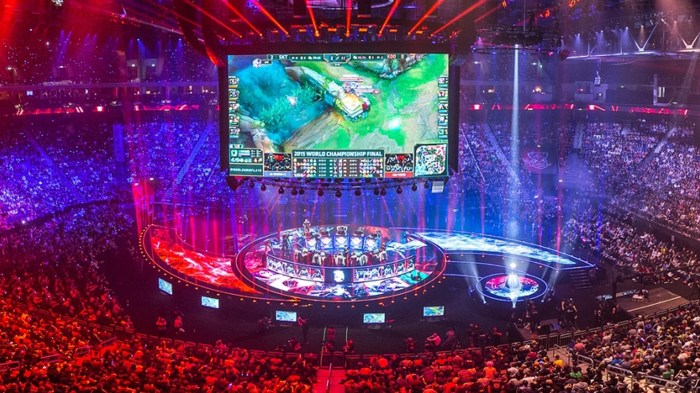
Securing sponsorships and maximizing revenue streams are crucial for the financial success of any esports event. A well-structured sponsorship program can not only cover event costs but also contribute significantly to its overall growth and impact. This section details potential sponsors, sponsorship packages, revenue generation methods, and various revenue models prevalent in the esports industry.
Potential Sponsors and Mutual Benefits
Identifying the right sponsors is paramount. Potential sponsors can be categorized into several groups: hardware and software companies (gaming peripherals, PCs, monitors), energy drink and food companies, telecommunications providers, financial institutions, and apparel brands. Each sponsor offers unique benefits to the event and receives corresponding advantages. For instance, a gaming peripheral company might sponsor a tournament featuring their products, gaining significant brand visibility among a highly engaged target audience. In return, the event benefits from the financial contribution and potentially receives product donations for prizes or giveaways. Similarly, an energy drink company might sponsor the event in exchange for prominent branding during live streams and on-site marketing opportunities, reaching a large consumer base actively consuming their product demographic.
Sponsorship Packages and Pricing Strategies
Sponsorship packages are typically tiered, offering varying levels of visibility and engagement. A basic package might include logo placement on event materials and social media mentions, while a premium package could incorporate exclusive branding opportunities, VIP access, and speaking slots. Pricing strategies are based on factors such as the event’s reach, audience demographics, and the sponsor’s desired level of involvement. A common approach is to price packages based on estimated audience reach and potential return on investment (ROI) for the sponsor. For example, a package offering prominent logo placement during a livestream viewed by 100,000 viewers might cost significantly more than one offering only social media mentions. The pricing can also be negotiated based on the sponsor’s specific marketing goals and budget.
Maximizing Revenue Generation
Revenue generation extends beyond sponsorships. Ticket sales, particularly for live events, constitute a major income source. Merchandise sales, including branded apparel, accessories, and collectibles, can also generate substantial revenue. In-game advertising, integrated into the game being played, and digital advertising on event websites and social media platforms provide further opportunities. Premium experiences, such as VIP meet-and-greets with players, offer additional revenue streams. Furthermore, broadcasting rights and licensing fees can be significant revenue generators, especially for large-scale events.
Esports Event Revenue Models
Several revenue models are employed in the esports industry. The most common is the sponsorship-driven model, relying heavily on securing sponsorships from various companies. Another is the ticket sales model, prominent for live events. A hybrid model combines sponsorship revenue with ticket sales and merchandise revenue. A subscription model is becoming increasingly popular, particularly for online events and streaming platforms, where viewers pay a recurring fee for access to content. Finally, a freemium model offers free access to some content, while premium content requires a paid subscription. The choice of model depends on the scale and nature of the event. For instance, a small, local tournament might rely primarily on ticket sales and sponsorships, while a major international event might employ a hybrid model incorporating all the above revenue streams.
Sample Sponsorship Proposal: “CyberStorm Championship”
This proposal Artikels sponsorship opportunities for the CyberStorm Championship, a three-day esports tournament featuring the popular game “Apex Legends.” We anticipate an audience of 50,000 unique viewers across various platforms.
| Package | Description | Price (USD) |
|---|---|---|
| Bronze | Logo placement on event website and social media; mentions during livestream. | 5,000 |
| Silver | Bronze benefits + on-site branding at the venue; 30-second ad during livestream. | 15,000 |
| Gold | Silver benefits + exclusive interview with a top player; pre-event social media campaign featuring the sponsor. | 30,000 |
“Partnering with the CyberStorm Championship provides unparalleled access to a highly engaged audience of gaming enthusiasts.”
Esports Event Game Selection & Tournament Format
Selecting the right games and tournament format is crucial for a successful esports event. The choices significantly impact audience engagement, sponsorship opportunities, and overall event profitability. Careful consideration must be given to game popularity, player base, spectator appeal, and the logistical demands of each game. The tournament format, in turn, dictates the competitive flow and the overall experience for both players and viewers.
Criteria for Game Selection
Several key factors influence the selection of appropriate games for an esports event. These include the game’s current popularity and player base size, ensuring a large pool of potential competitors and viewers. The game’s suitability for spectator viewing is also critical; fast-paced action, clear objectives, and engaging visuals are all desirable characteristics. Finally, the technical requirements of the game, including its hardware and software needs, must be considered to ensure smooth event execution. For example, a game requiring high-end PCs might limit participation and increase logistical complexities. Conversely, a game with simpler requirements might broaden participation but potentially reduce the overall production value. The chosen game should also align with the event’s target audience and overall branding.
Comparison of Tournament Formats
Various tournament formats exist, each with its own strengths and weaknesses. Single-elimination brackets are straightforward, offering a clear path to victory but eliminating competitors after a single loss. Round-robin formats, where each team plays every other team, provide more balanced competition but require a larger time commitment. Double-elimination brackets offer a second chance to competitors who lose once, increasing fairness but extending the event’s duration. Swiss-system tournaments pair competitors based on their win-loss records, adapting to the skill levels within the participant pool. The choice of format significantly influences the length of the event, the level of competition, and the overall viewing experience. For instance, a single-elimination bracket might be preferred for a shorter, more action-packed event, while a round-robin format might be better suited for a longer, more strategic competition.
Rules and Regulations in Competitive Esports Tournaments
Competitive esports tournaments operate under a defined set of rules and regulations. These rules typically cover aspects like player conduct, gameplay mechanics, equipment specifications, and dispute resolution processes. They aim to ensure fair play, maintain consistency, and manage potential conflicts. For instance, rules might prohibit specific in-game strategies considered exploitative, define acceptable communication between players, or Artikel the process for handling technical issues during a match. These rules are usually published in advance, allowing participants to familiarize themselves with the expected standards of conduct and competition. Enforcement is often overseen by referees or tournament officials, who monitor gameplay and address any rule violations.
Examples of Successful Esports Tournament Formats
The League of Legends World Championship utilizes a group stage followed by a single-elimination bracket, combining the benefits of round-robin (in the group stage) with the dramatic tension of a knockout stage. This format allows for a comprehensive evaluation of teams’ strengths before the high-stakes elimination rounds. The success of this format stems from its ability to balance competitive fairness with captivating storytelling for the audience. The Dota 2 The International tournament, known for its massive prize pool, also uses a group stage followed by a single-elimination bracket, mirroring the success of League of Legends’ format. The popularity of these formats highlights the effectiveness of combining a preliminary round-robin style competition with a more focused elimination bracket.
A Unique Tournament Format: The “Adaptive Gauntlet”
This innovative format combines elements of single-elimination and round-robin competition, dynamically adjusting based on player performance. The tournament begins with a single-elimination bracket, but after each match, the losing team is placed in a separate “gauntlet” bracket. This gauntlet bracket is a round-robin format where teams compete against each other to earn points. The top-performing teams from the gauntlet bracket can then re-enter the main single-elimination bracket at a later stage, creating a dynamic and unpredictable competition. This format rewards both consistent performance and the ability to bounce back from early setbacks, offering a unique blend of high-stakes elimination rounds and a more forgiving, skill-based progression system. This design allows for more compelling storylines and prolonged engagement, appealing to both players and spectators.
Esports Event Player Management & Support
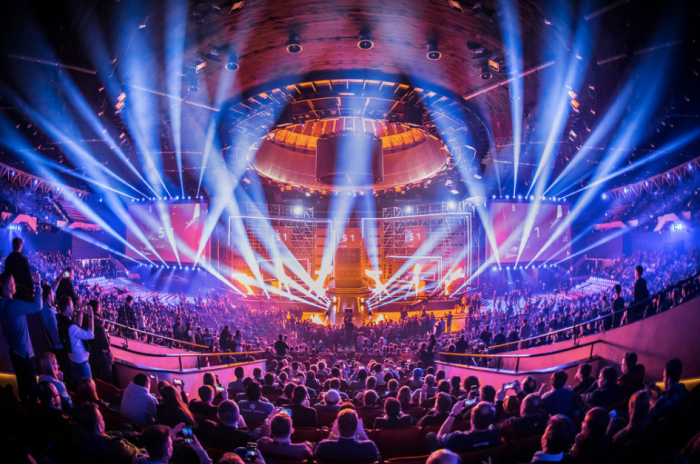
Successful esports events hinge on effectively managing the players, ensuring their well-being and fostering a competitive yet supportive environment. This involves a multifaceted approach encompassing logistical support, dispute resolution, and the creation of a positive player experience.
Player Responsibilities and Support Systems
Managing esports players requires a dedicated team responsible for various aspects of their experience. This includes coordinating travel arrangements, providing accommodation, and ensuring access to necessary equipment and technical support. Beyond the logistical aspects, the team also plays a crucial role in fostering a positive atmosphere by addressing player concerns promptly and providing emotional support when needed. A clear communication channel, perhaps a dedicated Slack channel or Discord server, facilitates quick resolution of issues and keeps players informed of event updates. Regular check-ins with players, both individually and as a group, help gauge morale and address potential problems proactively. This proactive approach minimizes disruptions and ensures player well-being, contributing to a smoother and more successful event.
Creating a Positive and Supportive Environment
Cultivating a positive and supportive environment for players is paramount. This involves establishing clear expectations regarding conduct, both on and off the stage. A well-defined code of conduct, signed by all participants, helps set the tone for respectful interaction and fair play. Furthermore, providing players with access to resources such as mental health professionals or sports psychologists demonstrates a commitment to their well-being beyond just the competitive aspect of the event. Organizing team-building activities or social events outside of competition can also foster camaraderie and improve team dynamics. For example, a casual dinner or a fun outing could help reduce stress and build stronger relationships among players. These efforts go beyond simply managing logistics; they invest in the overall experience, leading to improved performance and a more enjoyable event for all.
Handling Player Disputes and Maintaining Fair Play
A robust system for handling player disputes is essential for maintaining fair play. This system should involve clearly defined rules and regulations regarding conduct, including penalties for violations. A neutral third-party arbitrator, ideally someone with experience in esports regulations, should be appointed to adjudicate disputes. This ensures impartiality and helps maintain the integrity of the competition. Transparency is crucial; the process for resolving disputes should be clearly communicated to all players beforehand. Detailed records of all disputes, including the evidence presented and the arbitrator’s decision, should be maintained for future reference. The process should be swift and efficient to minimize disruption to the event. For example, a clear escalation path from informal mediation to formal arbitration should be Artikeld, ensuring that disputes are resolved effectively and fairly.
Player Accommodation, Travel, and Logistical Support
Providing comprehensive logistical support is vital for player performance and satisfaction. This involves arranging travel accommodations, including flights, transportation to and from the venue, and potentially even airport pickups. Secure and comfortable accommodation, ideally within close proximity to the venue, should be provided. Access to high-speed internet, necessary for players to prepare and communicate, should be guaranteed. Providing meals and refreshments throughout the event is also important, particularly during intense competition periods. A dedicated point of contact for players to address logistical concerns can significantly improve their experience. For instance, a designated support staff member can handle issues like lost luggage or equipment malfunctions, freeing players to focus on the competition.
Esports Event Code of Conduct
The code of conduct should clearly Artikel acceptable behavior, both online and offline. This includes rules regarding sportsmanship, respectful communication, and the prohibition of cheating or any form of unsportsmanlike conduct. The code should also address the use of social media, emphasizing responsible online behavior and avoiding the dissemination of harmful or offensive content. Consequences for violating the code of conduct, ranging from warnings to disqualification, should be clearly specified. The code should be readily accessible to all players and reviewed before the event begins. For instance, a sample clause could state: “Players are expected to treat all other participants, staff, and spectators with respect at all times. Any form of harassment, verbal abuse, or discriminatory behavior will result in immediate disciplinary action.” Regular reminders of the code of conduct throughout the event can reinforce its importance and help maintain a positive environment.
Closing Notes

Successfully organizing an esports event demands a multifaceted approach, blending meticulous planning with a deep understanding of the esports ecosystem. From strategic marketing and efficient logistics to cutting-edge technology and player management, each component contributes to the overall experience. By mastering these elements, event organizers can create memorable events that not only entertain and engage but also contribute to the continued growth and evolution of the thriving esports industry. The key takeaway is a comprehensive strategy encompassing every aspect of event management, from conception to conclusion, is crucial for long-term success and sustainability within this dynamic and rapidly evolving field.
Commonly Asked Questions
What are the typical prize pools for esports events?
Prize pools vary dramatically depending on the game, the event’s scale, and the sponsors involved. They can range from a few thousand dollars to millions.
How do esports events handle cheating and player misconduct?
Events usually have strict rules and penalties for cheating, including disqualification and bans. Referees and anti-cheat technology are often employed.
What are the environmental considerations for large esports events?
Sustainability is increasingly important. Organizers are considering factors like energy consumption, waste reduction, and carbon footprint reduction.
How do esports events attract sponsors?
Attracting sponsors often involves demonstrating the event’s reach, audience demographics, and potential return on investment for sponsors through detailed proposals and marketing plans.





